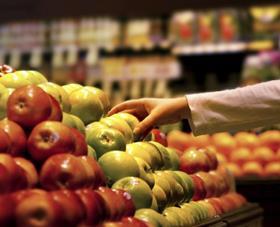
Sales in the UK grocery market have shown a marked recent improvement on 2009, according to figures collected by marketing and consumer information organisation Nielsen.
Growth for grocery multiples through the four-week period to 15 May climbed 3.1 per cent compared with the same period of 2009, the first monthly period this year where sales have registered growth of over 3 per cent.
Despite this increase, sales growth across all grocery channels was more subdued at 2,5 per cent, Nielsen reported, a reminder that the UK was still a low-growth environment for the sector.
'With low but still manageable food inflation feeding into sales since Easter, we can be reasonably confident that we have passed the low point in terms of year-on-year growth, but shoppers still need to be encouraged to spend,' said Mike Watkins, senior manager of retail services at Nielsen.
'Shoppers remain fickle and disloyal and are still shifting to retailers who offer the most immediate savings,' he added. 'As a result promotional spend has been maintained at 35 per cent – the exception being Asda where spend of offer has fallen a little over the last eight weeks.'
Nielsen picked out a number of trends with regards to the country's main retailers, with Tesco achieving the highest growth in spend per visit, and Asda retaining its position with the highest average spend per visit of £35 (€41).
Sainsbury's is attracting more shoppers than any other, up 1.8 per cent year-on-year, while Morrisons has also seen an increase in shopper visits, up 2.7 per cent.
This goes against the overall market trend however, with shoppers cutting down on the number of trips they make with 1 per cent fewer across the grocery market through the four weeks analysed.
'Cutting down on the number of trips made is a trend we saw at the outset of the recession when inflation was very high,' said Mr Watkins. 'Our consumers confidence survey saw rising fuel prices top the list of growing consumer concerns and this could account for fewer, but larger (up 3.7 per cent spend per visit) shopping trips being made.'



